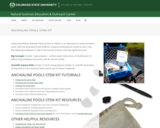
Over forty-plus years, Joseph Donohue spent many days in London libraries researching theatrical subjects and many afternoons and evenings in London theatres, witnessing almost one hundred twenty-five productions of original plays and revivals and recording his experience in a series of meticulously kept journals.
- Subject:
- Arts and Humanities
- Material Type:
- Textbook
- Provider:
- University of Massachusetts Amherst
- Date Added:
- 01/21/2021
